May 21, 2018
Five defenders to watch at the World Cup
TSN.ca continues its look ahead to next month's FIFA World Cup in Russia, turning the spotlight today on the back and five defenders to watch in the quadrennial tournament set to kick off on June 14.
TSN.ca Staff
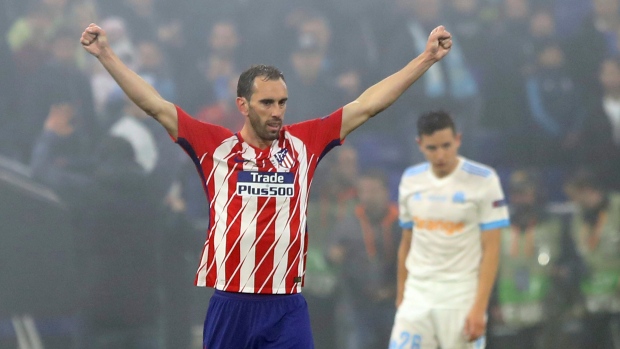
TSN.ca continues its look ahead to next month's FIFA World Cup in Russia, turning the spotlight today on the back and five defenders to watch in the quadrennial tournament set to kick off on June 14.
While this quintet might not steal the headlines, each man has the chance to play a pivotal role for his side in Russia.
Kalidou Koulibaly, centre-back – Senegal (Napoli)
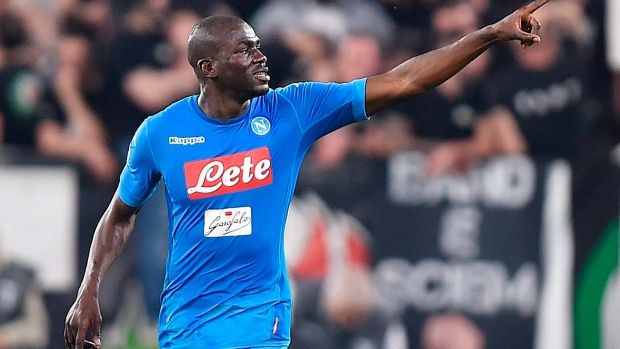
It’s probably fair to say that Koulibaly will have a lot on his mind when he heads to Russia next month.
For one thing, this is only Senegal’s second ever appearance at the quadrennial tournament. Memorably, they were debutants in 2002 and upset holders France in the opening match of the tournament (coincidentally, Senegal is managed by the captain of that 2002 squad, Aliou Cisse). In Group H with Poland, Colombia and Japan, Senegal will face a stiff test and be considered longshots to exit the group, despite quality attacking talent in the likes of Sadio Mane (Liverpool), M’Baye Niang (Torino, on loan from Milan) and Idrissa Gueye (Everton).
But on top of what appears to be an uphill battle to make it to the knockout round, Koulibaly will likely be thinking of his club future, as well. Heading into the summer transfer window, the hulking 26-year-old defender could be one of the market’s hottest commodities with reports that teams could be readying world-record offers for his services. Why? Because Koulibaly is one of world football’s most imposing figures in the back.
At 6’5, good luck winning a header against him or getting position over him on a set piece. Koulibaly has thrived at Napoli under Maurizio Sarri, developing a keen spatial awareness that has been crucial to his emergence as a dependable interceptor of passes (averaging 1.1 per game this season in Serie A) and a master of clearances (3.2 per game in the league). Even his offensive game has picked up, scoring a career-high five goals this season.
If a downside remains to Koulibaly’s game, it’s that he still can give away unnecessary fouls. Anderlecht’s Kara Mbondji was named to Senegal’s 23-man roster, despite still recovering from a knee injury, but if he is healthy, he and Koulibaly could form a daunting partnership in the middle of the Senegal defence.
Marquinhos, centre-back – Brazil (Paris Saint-Germain)
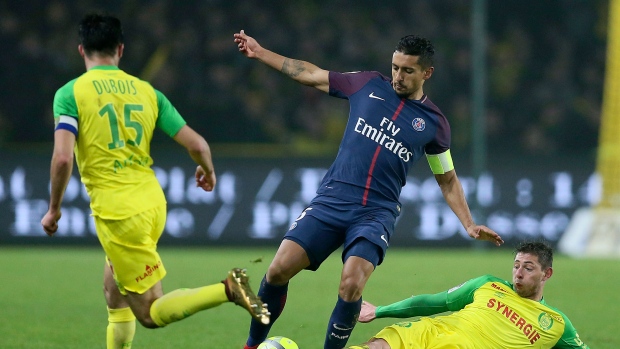
It is impossible to look ahead to Brazil’s World Cup without viewing it through the lens of how they exited the World Cup at home in 2014.
In the semi-finals against eventual champions Germany, the Selecao were absolutely trucked in a 7-1 embarrassment that was decided before the game was even a half-hour old. Only four members of the 23-man squad that were humiliated by Germany return for Russia with Real Madrid’s Marcelo the lone holdover among defenders. Key to manager Tite’s quest for Brazilian redemption is a new-look backline and Marquinhos figures into his plans heavily.
The 24-year-old PSG man will be first choice at centre-back as Brazil looks to navigate a group that includes Costa Rica, Serbia and Switzerland. A product of the Corinthians academy, Marquinhos began his PSG career much like his time at Roma, where he split time between centre-back and right-back, but the sale of fellow Brazilian David Luiz back to Chelsea allowed the benefit of more playing time for Marquinhos, who cemented his status as top choice. A crisp and competent passer (he averaged 93.9 per-cent completion in Ligue 1 this season), Marquinhos is both stylish, technically sound and capable of winning aerial battles. He averaged 4.2 clearances a game this season in the league and his chemistry with Inter’s Miranda will be crucial to the strength of the Brazilian spine with Casemiro expected to play just in front of the central defence.
If the Brazilian backline plays up to its potential and its potent attack lives up to its billing, Marquinhos could play a big part in Brazil making a 2014 a distant memory next month in Russia.
Ashley Young, left-back – England (Manchester United)
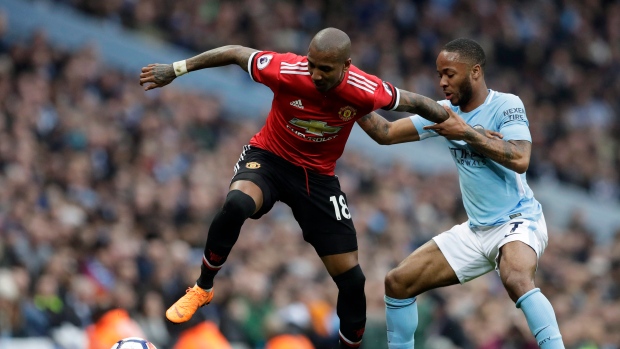
The fact that Ashley Young is heading to his first World Cup at age 33 is remarkable, but how and why he’s going might even be more so.
Prior to last fall, Young had not been capped at all by England in four years until Gareth Southgate decided to give him a recall in November. A winger for his entire career, United manager Jose Mourinho began experimenting with Young at wingback last season and fully committed to it this year with the former Watford and Aston Villa man as his first choice in the left side of defence. It turns out that you can teach an old dog new tricks because Young has found a second life in the back and shone in his new role, virtually pushing Luke Shaw out of the team (and out of consideration for the World Cup, if we’re being honest).
Young’s most impressive performance came during United’s 2-1 defeat of Liverpool on May 10 in which he neutralized Reds superstar Mo Salah in a way virtually nobody else had been able to handle the PFA Player of the Year this season. Young won all six of his tackles, made four interceptions and five clearances. Salah was dispossessed eight times and was held to just 42 touches in the 90 minutes.
With Southgate likely running a 3-4-2-1 in Russia, there could even be room for Young in his first-choice XI. Young will compete with Tottenham Hotspur left-back Danny Rose for the left wingback role, opposite Rose’s Spurs teammate, Kieran Trippier, on the right. The fact that Young’s name is even in the conversation to start right now could signify a lack of English depth at the position (and it does), but it’s also indicative of the remarkable turnaround in Young’s career over the past 18 months.
Diego Godin, centre-back – Uruguay (Atletico Madrid)

Diego Godin heads to Russia fresh off of another trophy.
His Atletico side battered Marseille 3-0 in the Europa League final, giving the 32-year-old defender his sixth piece of silverware since joining Atleti in 2010 from Villarreal. Entering his third World Cup and captaining the side, Godin will have to like Uruguay’s chances of getting out of an unimpressive Group A that includes Saudi Arabia, Egypt and the host Russians.
Indecisiveness kills defenders and Godin has succeeded for as long as he has because it’s of no concern to him. Godin has made his name by being quick-thinking and knowing when to commit himself to a tackle (averaging 1.7 per game in La Liga this season) or interception (2.0 per game in the league this year). While his offensive touch is lacking, Godin is still capable of helping to press forward, but getting back in time to stop a counter. Undoubtedly, Diego Simeone probably worries about the amount of space that Godin is seemingly giving up to an attacker who can get behind up when he presses, but his ability to quickly transition back assuages those fears quickly.
Godin should also have no time developing chemistry with his partner in central defensive – Atleti teammate Jose Gimenez is likely being slated by head coach Oscar Tabarez to partner up with him.
Joshua Kimmich, right-back – Germany (Bayern Munich)
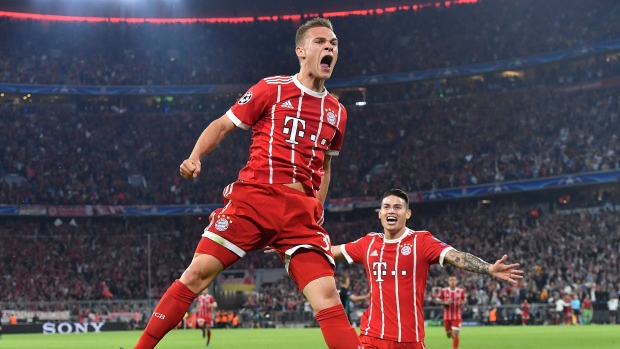
Philipp Lahm is still only 34 years of age and could most likely just waltz into the starting backline of virtually every club in world football later today if he chose to come out of retirement.
But that’s not going to happen and Lahm left the sport, still at the height of his game, last spring, calling it quits after Bayern’s season ended. With his exit, Bayern joined the national team as bereft of their rock in the right side of defence (Lahm had already retired internationally following Germany’s World Cup triumph in 2014).
As luck should have it, thouhg, both Bayern and the national side found his replacement in the same person. Enter Joshua Kimmich. Bought from RB Leipzig in 2015, the 23-year-old Kimmich was transformed under Pep Guardiola into the Bayern side’s Swiss Army defender, converted from a pure central midfielder to a central defender and then to out on the right where he excels now.
Certainly, this isn’t the first instance of such a transition with Manchester United converting winger Antonio Valencia into a capable fullback and Sergi Roberto dropping back to operate on the right side of defence at Barcelona, but Kimmich looks like a natural. Kimmich’s 10 assists were second among Bundesliga defenders this season with many of them coming from his pinpoint accuracy on crosses.
In comparison to Lahm, he might not nearly be as technically sound, but his attacker’s instincts make up for that, averaging 2.5 key passes per match, the best mark for anybody at his position in Europe. Germany enters Russia as the odds-on favourite for the tournament and with players the calibre of Kimmich up and down the pitch, it’s easy to see why.
